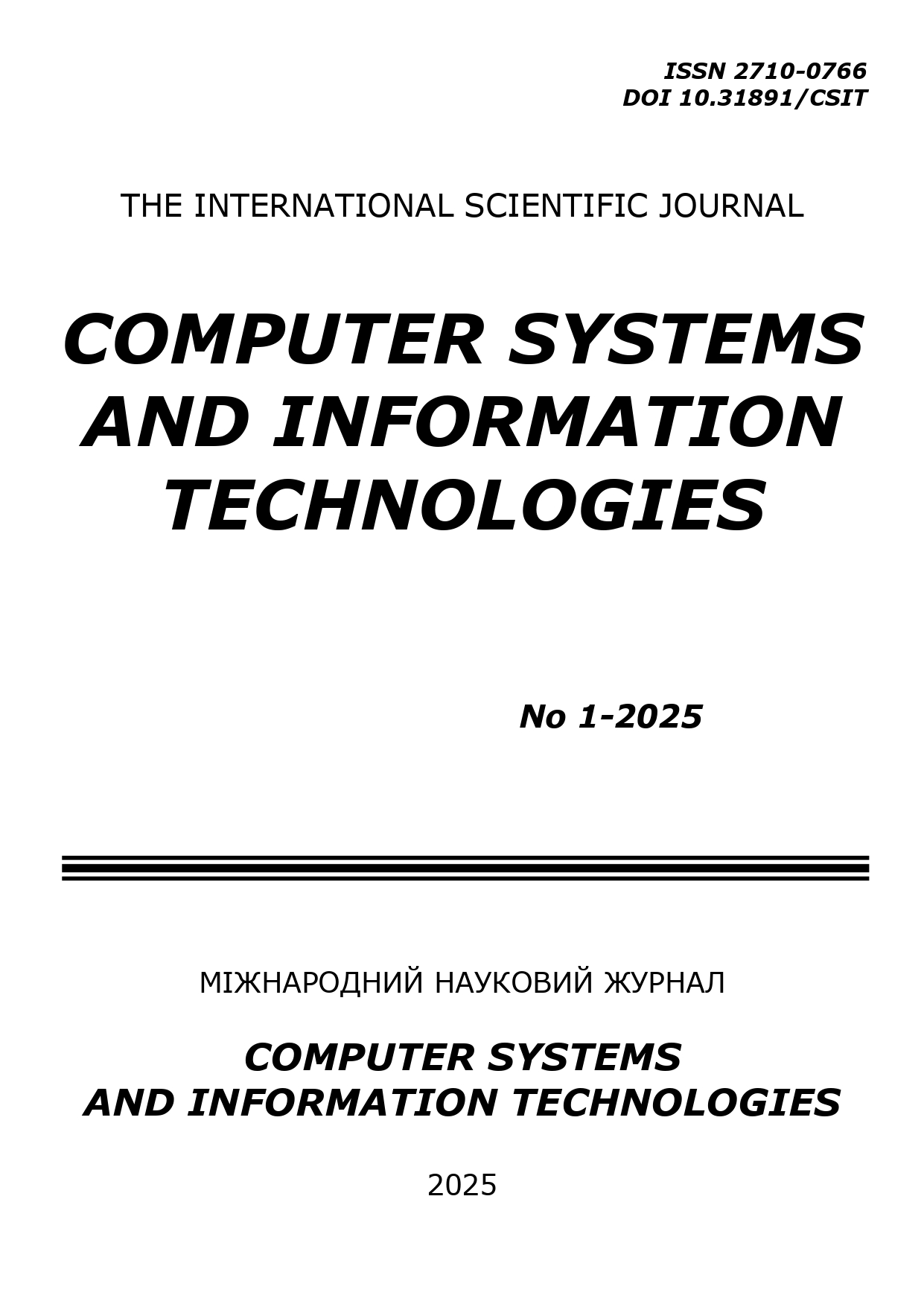METHOD OF OPERATION OF THE CYBER-PHYSICAL WATER RESOURCES MONITORING SYSTEM
DOI:
https://doi.org/10.31891/csit-2025-1-6Keywords:
cyber-physical system, water resources monitoring parameters, water resources monitoring, ensors and IoT devices for measuring water level, water temperature, water ph-balance, water chemical composition, water flow rate, impurities presence in waterAbstract
The relevance of designing and developing a cyber-physical water monitoring system for Ukraine is driven by the need for effective water management in the face of climate change, water pollution, and growing water supply needs. Modern challenges, such as the lack of clean drinking water, irrational use of resources, emergency condition of water supply networks and environmental threats, require the introduction of innovative technologies. The use of sensor networks, artificial intelligence, and cloud computing allows us to quickly obtain information about water quality and quantity, predict changes, and prevent emergencies. The introduction of cyber-physical systems in the field of water resources monitoring will help to increase the efficiency of water management, reduce losses, improve the ecological condition of water bodies and provide the population with quality water. For Ukraine, where water security is a strategic issue, such solutions will be an important step towards sustainable development and environmental balance. The use of Internet of Things (IoT), Big Data, and artificial intelligence technologies can automate the processes of data collection, analysis, and forecasting, which will help optimize water use, prevent pollution, and increase the efficiency of water infrastructures. Thus, the task of designing and developing a cyber-physical water resources monitoring system is currently relevant for Ukraine.
The article develops a method for the operation of a cyber-physical water resources monitoring system that provides cyber-physical integration (a combination of physical (sensors, objects) and cybernetic (analytics, control) components), autonomy (the ability to function without constant human intervention), scalability (the ability to expand the geography of monitoring), and monitoring continuity (round-the-clock real-time monitoring).
Downloads
Published
How to Cite
Issue
Section
License
Copyright (c) 2025 Юрій ВОЙЧУР, Андрій БАЛАН

This work is licensed under a Creative Commons Attribution 4.0 International License.

